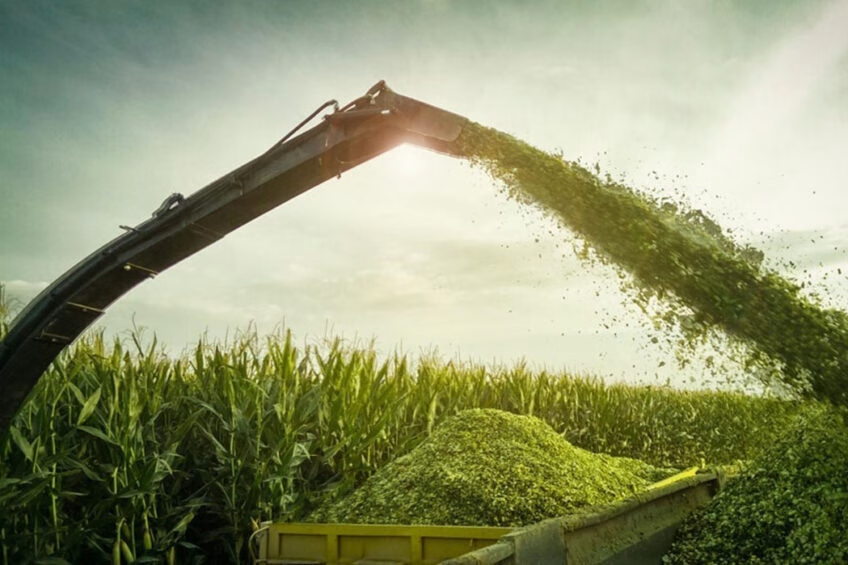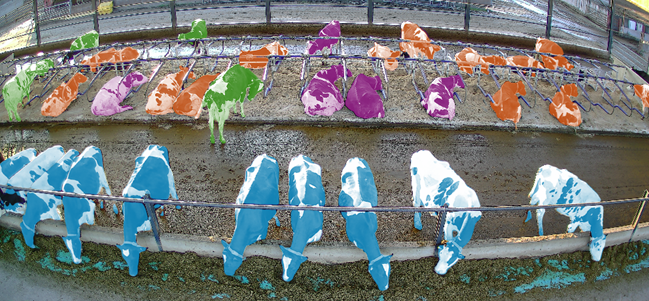Uncover the unseen culprit harming your calves. Learn how oxidative stress affects your dairy farm and what steps to take to safeguard your herd.
Summary: Oxidative stress is a big, often overlooked, factor that can quietly harm your calves’ health. It happens when there’s an imbalance between free radicals and antioxidants in their bodies. Triggers like environmental extremes, poor diets, and diseases can all contribute to this. For dairy farmers, stressed calves might not grow into productive cows, hitting your farm’s output and profits hard. Plus, it links to various health issues, leading to higher vet bills and lower milk yields over time. As dairy farm consultants, we aim to give you practical tips to combat this hidden issue, from dietary tweaks to stress-reducing practices. Preventive measures like proper diets, adequate ventilation, clean living spaces, and gentle handling can make a big difference.
- Oxidative stress results from an imbalance between free radicals and antioxidants and can severely affect calves’ health.
- Common triggers include environmental extremes, poor diets, and diseases.
- Stressed calves are likely to grow into less productive cows, impacting farm output and profits.
- Links to various health issues, higher veterinary costs, and decreased milk yields emphasize the seriousness of oxidative stress.
- Practical strategies to combat oxidative stress include dietary modifications, maintaining adequate ventilation, ensuring clean living spaces, and employing gentle handling practices.

Picture this: You walk into your barn expecting lively calves, but instead, they seem sluggish and unwell. You’ve fed them well, kept the barn clean, and ensured they’re infection-free, so what’s going wrong? The hidden culprit could be oxidative stress—a condition where an imbalance of antioxidants and free radicals causes cell damage. This issue can severely impact young calves, affecting their growth and immune systems. Did you know calves facing oxidative stress have a 20% higher death rate and a 30% rise in respiratory illnesses? Plus, their growth rates can drop by up to 15%. But don’t worry; there are ways to address this health threat. Want to know the secret to healthier, stronger calves? Keep reading for expert tips and strategies!
The Silent Saboteur: How Oxidative Stress Is Secretly Undermining Your Calves’ Health!
Oxidative stress can be considered a seesaw inside a calf’s body. On one side are harmful chemicals called free radicals, and on the other are antioxidants that keep these radicals in check. Usually, the seesaw stays balanced, keeping the calf healthy. But when too many free radicals and insufficient antioxidants exist, the seesaw tips, causing oxidative stress.
This imbalance is often caused by inadequate diet, illnesses, or environmental pressures, such as a poorly maintained automobile engine, which releases excessive smoke and breaks down faster. A calf suffering from oxidative stress may have difficulty growing, developing immunity, and maintaining good overall health. For dairy producers, this is a significant worry. A stressed calf will not mature into a productive cow, reducing the farm’s output and profit. Oxidative stress has been related to various health concerns, which may result in higher veterinary expenditures and lower milk outputs in the long run (J. et al., 2017;100:9602-9610).
Environmental Extremes, Poor Diets, and Disease: The Trio Wreaking Havoc on Your Calves’ Health
Many variables cause oxidative stress in calves, each contributing uniquely to this hidden threat. Extreme temperatures, both blazing heat and chilling cold, may increase oxidative stress levels. For example, according to research published in Animal Feed Science and Technology, calves exposed to high temperatures often have elevated levels of oxidative markers (Gaojuan Zhao et al.).
The diet also plays a significant influence. Nutrient deficits or imbalances, notably in antioxidants such as Vitamin E and Selenium, worsen oxidative stress. According to research, a shortage of these essential antioxidants impairs the calf’s capacity to neutralize free radicals, resulting in cellular damage (Surai et al., “Free Radical Biology and Medicine,” 2010).
Furthermore, infections and disorders may significantly increase oxidative stress. Pathogens cause an immunological response, which, although helpful for fighting sickness, also produces oxidative byproducts that may be dangerous if not handled properly. An investigation by Science (1973) supports this by revealing higher oxidative stress indicators in sick cattle.
These elements work together to create a situation where calves constantly battle oxidative stress, which is unknown to many farmers. Understanding and managing these effects is critical, and it’s also your responsibility as a dairy producer to improve calf health and build a strong herd.
Unmasking the Hidden Enemy: The Silent Impact of Oxidative Stress on Your Herd
Oxidative stress, the invisible nemesis of calf health, may have many negative consequences. One of the main implications is a decreased immune system. When free radicals outnumber antioxidants, oxidative damage can impair immune cell functionality, reducing the calf’s ability to fight pathogens—a study published in Anim. Feed Sci. Technol. (2014, 191: 15-23) discovered that oxidative stress significantly compromised the immune response in young calves, making them more susceptible to infections.
Another significant effect is reduced growth rates. Oxidative stress may harm cellular components crucial for growth and development, including DNA, proteins, and lipids. The study published in Science (1973, 179: 585-590) found that oxidative stress in calves caused a considerable reduction in growth rates, underlining the need for watchful antioxidant control in young animals.
Furthermore, calves under oxidative stress are more susceptible to illnesses. The cumulative damage to immune system components and general tissue health creates a breeding environment for illness. According to Free Radic. Biol. Med. (2010, 49: 1603-1616), oxidative stress may disturb the gut microbial balance, affecting overall health and resistance to gastrointestinal disorders.
Dr. Peter F. Surai, a specialist in animal nutrition and author of numerous research on oxidative stress, states that “incorporating antioxidants like Vitamin E and Selenium in the diet has been shown to bolster the immune system of calves.” This modest nutritional change may boost disease resistance and general vitality, ensuring calves grow into healthy, productive adult cattle” (Anim. Feed Sci. Technol., 2014).
Case studies support these views. According to observational studies referenced by Hoard’s Dairyman, calves with high oxidative stress had a 15% higher risk of respiratory illness and a 10% lower weight growth than those with less stress. These findings provide little doubt regarding the negative impact of oxidative stress on calf health.
Preventive Measures to Safeguard Your Calves from Oxidative Stress: Evidence-Backed Strategies for Optimal Health and Growth. By implementing these strategies, you can significantly improve the health and growth of your calves, giving you hope for a healthier herd. Preventive interventions to reduce oxidative stress in calves are critical for their health and healthy development. Implementing a complete strategy incorporating dietary changes, environmental management, and stress-reduction techniques can have a significant impact, giving you confidence in your approach to managing oxidative stress.
Here are some evidence-backed strategies:
Dietary Recommendations
- Antioxidant-Rich Feed: Providing feed rich in antioxidants such as Vitamin E, Vitamin C, and Selenium can help neutralize free radicals. Research indicates that antioxidant supplementation improves immune responses and reduces animal oxidative damage (J.Dairy Sci.201710096029610).
- Omega-3 Fatty Acids: Incorporating omega-3 fatty acids into the diet has been shown to reduce inflammation and oxidative stress. Studies suggest omega-3 supplementation can improve calf health and reduce disease prevalence (Anim.Feed.Sci.Technol.20141921523).
Environmental Management
- Proper Ventilation: Ensuring adequate ventilation in barns can help reduce the accumulation of harmful gases and pathogens. Good airflow is essential in maintaining an environment conducive to calf health (J Nat. Med.2015697685).
- Clean and Dry Housing: Keeping the calves’ living area clean and dry minimizes the risk of infections and reduces the overall stress on young animals. Regular cleaning protocols and bedding changes are recommended (Free Radic.Biol.Med.20104916031616).
Stress-Reducing Practices
- Consistent Routines: Maintaining consistent feeding and handling routines can help reduce stress in calves. Animals are sensitive to changes, and a stable environment contributes to their well-being (Pak. J. Zool.201648923930).
- Gentle Handling: Employing gentle handling techniques and reducing abrupt environmental changes are crucial for minimizing stress responses in calves. Training staff on low-stress handling can have long-term benefits (Sci.1973179588590).
These techniques improve the calves’ immediate health and promote long-term growth and production. Regular monitoring and modifications depending on unique farm circumstances may help optimize these tactics for the best results.
The Bottom Line
Oxidative stress is a concealed foe in the health management of calves. Environmental extremes, poor diets, and illnesses enhance oxidative stress, jeopardizing calf health and development. Addressing this problem entails providing a nutritionally balanced food supplemented with antioxidants, using environmental management measures to reduce stressors, and applying stress-reduction methods to improve overall well-being. These measurements are critical in developing muscular, healthy calves; they do not consider the importance of oxidative stress. Evidence-based practices might be the key to increasing your herd’s production and lifespan. An ounce of prevention is worth a pound of cure, and protecting your calves against oxidative stress is a proactive step toward improved health and profitability. Are you prepared to make these adjustments and notice the difference?














